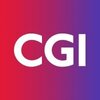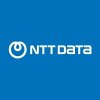Filter interviews by
Clearvision Interview Questions and Answers
Be the first one to contribute and help others!
Interview questions from similar companies

I was interviewed in Jan 2025.
(6 Questions)
- Q1. What is correlation and parameterization?
- Q2. Explain load, stress, all testing?
- Q3. Explain PTLC?
- Q4. Loadrunner scripting, execution and reports issue faced and how to process?
- Q5. LG calculation and workload modelling process?
- Q6. NFR scenarios?
(1 Question)
- Q1. Loadrunner questions
(1 Question)
- Q1. Check your soft skills
(1 Question)
- Q1. Complete your details

Finance Executive Interview Questions & Answers
Virtusa Consulting Servicesposted on 13 Jan 2025
I applied via campus placement at Institute of Cost and Works Accountants of India (ICWAI) and was interviewed in Dec 2024. There were 3 interview rounds.
Online assessment (Technical, English, Reasoning)
(6 Questions)
- Q1. Difference between Balance sheet and trial balance
- Ans.
Balance sheet shows assets, liabilities, and equity at a specific point in time. Trial balance lists all ledger accounts with their balances.
Balance sheet is a snapshot of a company's financial position at a specific point in time.
Trial balance is a list of all ledger accounts with their balances to ensure debits equal credits.
Balance sheet includes assets, liabilities, and equity sections.
Trial balance is used to prep...
- Q2. Standard costing formula
- Ans.
Standard costing formula calculates the expected cost of a product based on predetermined standards.
Standard costing formula includes direct materials, direct labor, and overhead costs.
It helps in comparing actual costs with standard costs to identify variances.
Formula: Standard Cost = Standard Quantity of Inputs x Standard Price of Inputs
- Q3. Journal entries for Prepaid Accruals Depreciation with accumulated depreciation concept Provision for Bad debts DTA and DTL
- Ans.
Explanation of journal entries for Prepaid, Accruals, Depreciation, Provision for Bad debts, DTA, and DTL.
Prepaid expenses are initially recorded as assets and then expensed over time as they are used up.
Accruals are expenses incurred but not yet paid or revenue earned but not yet received.
Depreciation is the allocation of the cost of a fixed asset over its useful life, with accumulated depreciation representing the to...
- Q4. Case study on Ind AS 115
- Q5. Preparation of balance sheet and computation of various ratios
- Ans.
Preparation of balance sheet involves listing assets, liabilities, and equity. Ratios are computed using financial data from the balance sheet.
List all assets, liabilities, and equity on the balance sheet
Calculate various financial ratios such as current ratio, debt to equity ratio, and return on equity
Use formulae like Current Ratio = Current Assets / Current Liabilities
Interpret the ratios to analyze the financial he
- Q6. Accounting principles
(6 Questions)
- Q1. What is DTA and DTL
- Ans.
DTA stands for Deferred Tax Asset and DTL stands for Deferred Tax Liability.
DTA is an asset recorded on a company's balance sheet that may be used to reduce taxable income in the future.
DTL is a liability recorded on a company's balance sheet that represents taxes that have been accrued but not yet paid.
DTA arises when a company has overpaid taxes or has tax deductions that exceed its taxable income.
DTL arises when a c...
- Q2. Accounting entry for accumulated depreciation
- Ans.
Accumulated depreciation is a contra asset account that represents the total depreciation expense taken on an asset since it was acquired.
Accumulated depreciation is recorded on the balance sheet as a reduction from the gross amount of fixed assets to arrive at the net book value.
The accounting entry for accumulated depreciation involves debiting the depreciation expense account and crediting the accumulated depreciati...
- Q3. Few resume based questions
- Q4. Standard costing formula
- Ans.
Standard costing formula calculates the expected cost of a product based on predetermined standards.
Standard costing formula = Standard cost of direct materials + Standard cost of direct labor + Standard manufacturing overhead cost
Standard cost of direct materials = Standard quantity of materials x Standard price per unit
Standard cost of direct labor = Standard hours of labor x Standard rate per hour
Standard manufactur...
- Q5. Difference between budgeting and forecasting
- Ans.
Budgeting involves setting financial goals and allocating resources, while forecasting predicts future financial outcomes based on past data and trends.
Budgeting is a plan for how to allocate resources and achieve financial goals
Forecasting predicts future financial outcomes based on past data and trends
Budgeting is typically done on an annual basis, while forecasting can be done on a shorter or longer term basis
Budget...
- Q6. Meaning of variance analysis
- Ans.
Variance analysis is a technique used to identify and analyze the difference between planned financial outcomes and actual results.
Variance analysis helps in understanding the reasons for deviations from budgeted or expected figures.
It involves comparing actual financial performance with budgeted or standard performance.
Common types of variances include price variance, quantity variance, and mix variance.
Variance analy...
Interview Preparation Tips
First technical interview was for 45 - 50 mins
Second technical interview was for 20 mins

Qa Automation Testing Engineer Interview Questions & Answers
Nagarroposted on 30 Jan 2025
I was interviewed in Dec 2024.
Basic quant and reasoning questions
Selenium MCQ
Java programs with MCQ
(23 Questions)
- Q1. Tell me about yourself
- Q2. Where you initialise driver
- Ans.
The driver is typically initialized in the setup method of a test automation framework.
Driver initialization is usually done in a setup method before test execution.
Commonly used methods for driver initialization include WebDriverManager, System.setProperty, and driver instantiation.
Example: WebDriverManager.chromedriver().setup();
- Q3. Driver is static or non static
- Ans.
Driver can be both static and non-static depending on the context of its usage.
Driver class can be static if it is used to initiate the WebDriver instance in a test automation framework.
Driver class can be non-static if it is used as an instance variable within a test class.
Static driver can be accessed directly without creating an object of the class.
Non-static driver requires an object of the class to be created befo
- Q4. Difference between static and non static
- Ans.
Static variables belong to the class itself, while non-static variables belong to instances of the class.
Static variables are shared among all instances of a class
Non-static variables are unique to each instance of a class
Static variables are initialized only once, at the start of the program
Non-static variables are initialized separately for each instance of the class
- Q5. Disadvantages of static and non static
- Ans.
Static and non-static have their own disadvantages in QA automation testing.
Static methods cannot be overridden or inherited, making it difficult to create flexible test cases.
Non-static methods require an instance of the class to be created, which can lead to increased memory usage.
Static methods can lead to tight coupling between classes, making it harder to maintain and update the code.
Non-static methods may have de...
- Q6. Parallel execution in TestNG
- Ans.
TestNG allows parallel execution of test cases to save time and improve efficiency.
TestNG provides the 'parallel' attribute in the testng.xml file to specify the level of parallelism for test execution.
Parallel execution can be achieved at the test level, class level, method level, or suite level.
TestNG also supports parallel execution of tests across multiple classes or suites using the 'parallel' attribute in the sui...
- Q7. Write the code for Parallel testing in TestNG
- Ans.
Parallel testing in TestNG allows running tests concurrently for faster execution.
Use 'parallel' attribute in testng.xml file to specify parallel execution mode.
Set 'parallel' attribute to 'methods', 'classes', or 'tests' based on the level of parallelism needed.
Example: <suite name='MySuite' parallel='tests'>
Use 'thread-count' attribute to specify the number of threads to use for parallel execution.
- Q8. Difference between parallel methods and parallel tests
- Ans.
Parallel methods run multiple methods concurrently within a single test, while parallel tests run multiple tests concurrently.
Parallel methods execute multiple methods within a single test class concurrently.
Parallel tests execute multiple test classes concurrently.
Parallel methods are useful for speeding up the execution of a single test, while parallel tests are useful for running multiple tests faster.
Example: Runni...
- Q9. Upload file using rest assured
- Ans.
Use Rest Assured to upload a file
Use the given file path to create a File object
Use MultiPartSpecBuilder to build the request with the file
Send the request using Rest Assured's given(), when(), and post() methods
- Q10. Postman basic questions
- Q11. Parameter for post method in postman
- Ans.
The parameter for a POST method in Postman is typically sent in the request body.
Parameters are sent in the request body in key-value pairs
Parameters can be sent as form-data, x-www-form-urlencoded, or raw JSON
Example: {"key": "value"}
- Q12. BDD Framework cucumber
- Q13. Cucumber execution process
- Q14. How cucumber know step defination file placed
- Ans.
Cucumber knows the step definition file based on the annotations provided in the feature files.
Cucumber uses annotations like @Given, @When, @Then to map steps in feature files to corresponding step definition methods.
Step definition files are typically placed in a separate package or directory within the project structure.
Cucumber scans the project directory for step definition files based on the package structure and
- Q15. Parameters used in cucumber
- Ans.
Parameters used in cucumber are used to pass values to the step definitions in feature files.
Parameters are defined in feature files using < > syntax
Parameters can be passed to step definitions using Regular Expressions
Parameters can be used to make scenarios more reusable and dynamic
- Q16. Datatable in cucumber
- Ans.
Datatable in Cucumber is used to pass multiple sets of data to a step definition in a scenario.
Datatables are defined using pipes (|) to separate values
Each row in the datatable represents a set of data passed to the step definition
Datatables can be used for parameterization and data-driven testing
- Q17. Have u created the testplan document when porject was started
- Ans.
Yes, I have created the test plan document at the start of the project.
Yes, I always create a test plan document at the beginning of a project to outline the testing approach and strategy.
The test plan document includes details on scope, objectives, resources, schedule, and test cases.
It helps in ensuring that all stakeholders are aligned on the testing process and expectations.
For example, in my previous project, I cr...
- Q18. Testing cycle when project was on initial level
- Ans.
During the initial testing cycle of a project, focus is on establishing test cases, setting up test environments, and identifying potential issues.
Creating test cases based on requirements
Setting up test environments
Identifying potential issues and risks
Executing test cases and reporting defects
Collaborating with developers to resolve issues
- Q19. Risk management and risk based testing
- Q20. Which estimate technique you follow , if fibonacci then why it is in 1 2 3 5 8 13 ?? Not in 12345678
- Ans.
Fibonacci sequence is a mathematical pattern where each number is the sum of the two preceding ones.
Fibonacci sequence is a series of numbers where each number is the sum of the two preceding ones.
The sequence starts with 1, 2, then each subsequent number is the sum of the two previous numbers (1+2=3, 2+3=5, 3+5=8, and so on).
This sequence is used in estimating because it reflects natural growth patterns found in natur
- Q21. What is testing matrix and automation ROI
- Ans.
Testing matrix is a tool used to track test coverage and automation ROI is the return on investment from implementing automation testing.
Testing matrix is a visual representation of test cases, test scenarios, and their coverage across different platforms, browsers, devices, etc.
Automation ROI is the measure of the benefits gained from automation testing compared to the costs incurred in implementing and maintaining th...
- Q22. Cicd tool
- Q23. Handle team ?

I applied via campus placement at J S S Academy of Technical Education, Bangalore and was interviewed in Dec 2024. There were 3 interview rounds.
Average to easy difficulty level.
(3 Questions)
- Q1. Java code of string manipulation
- Ans.
String manipulation in Java involves various methods like substring, concat, replace, etc.
Use substring() to extract a part of the string
Use concat() to concatenate two strings
Use replace() to replace a specific character or substring in a string
- Q2. What is the Java code for various types of sorting algorithms?
- Ans.
Various sorting algorithms in Java code
Bubble Sort: int[] arr = {5, 2, 8, 1, 3}; Arrays.sort(arr);
Selection Sort: int[] arr = {5, 2, 8, 1, 3}; Arrays.sort(arr);
Insertion Sort: int[] arr = {5, 2, 8, 1, 3}; Arrays.sort(arr);
Merge Sort: int[] arr = {5, 2, 8, 1, 3}; Arrays.sort(arr);
Quick Sort: int[] arr = {5, 2, 8, 1, 3}; Arrays.sort(arr);
- Q3. Sql query and topics related to joins.
(4 Questions)
- Q1. About yourself and family
- Q2. What do you know about the company?
- Ans.
The company is a leading software development firm specializing in creating innovative solutions for various industries.
Specializes in creating innovative software solutions
Works with clients from various industries
Known for high-quality and reliable products
Has a strong team of software engineers and developers
- Q3. Can you provide examples of real-life scenarios where you handled conflicts with either a colleague or a manager?
- Ans.
Handled conflicts by addressing issues directly, seeking compromise, and maintaining professionalism.
Addressed a disagreement with a colleague by scheduling a one-on-one meeting to discuss concerns and find common ground.
Resolved a conflict with a manager by actively listening to their perspective, providing feedback, and working together to find a solution.
Maintained professionalism during conflicts by staying calm, r...
- Q4. What actions would you take if your manager does not approve your product idea, and how would you attempt to persuade them?
- Ans.
I would gather more data to support my idea, present a compelling case to my manager, and be open to feedback and compromise.
Gather data to support the idea, such as market research, user feedback, or cost-benefit analysis.
Prepare a well-structured presentation highlighting the potential benefits of the product idea.
Listen to the manager's concerns and feedback, and be open to making adjustments or compromises.
Seek sup...
Interview Preparation Tips

I was interviewed in Jan 2025.
(5 Questions)
- Q1. What is the architecture of the Java Virtual Machine (JVM)?
- Ans.
The Java Virtual Machine (JVM) is an abstract computing machine that enables a computer to run Java programs.
JVM is platform-independent and converts Java bytecode into machine code.
It consists of class loader, runtime data areas, execution engine, and native method interface.
JVM memory is divided into method area, heap, stack, and PC register.
Examples of JVM implementations include Oracle HotSpot, OpenJ9, and GraalVM.
- Q2. What is the default connection pooling in Spring Boot, and how can it be customized?
- Ans.
The default connection pooling in Spring Boot is HikariCP, which can be customized through properties in the application.properties file.
HikariCP is the default connection pooling library in Spring Boot, known for its high performance and low overhead.
To customize the connection pooling, you can modify properties like 'spring.datasource.hikari.*' in the application.properties file.
For example, you can set maximum pool ...
- Q3. What are the best practices for optimizing a Spring Boot application?
- Ans.
Best practices for optimizing a Spring Boot application
Use Spring Boot Actuator to monitor and manage application performance
Implement caching mechanisms like Spring Cache to reduce database calls
Optimize database queries and indexes for better performance
Use asynchronous processing with Spring's @Async annotation for non-blocking operations
Profile and analyze application performance using tools like VisualVM or JProfi
- Q4. What is a heap dump, and how can it be used to identify memory leaks?
- Ans.
A heap dump is a snapshot of the memory usage of a Java application at a specific point in time.
Heap dumps can be generated using tools like jmap or VisualVM.
They provide detailed information about objects in memory, their sizes, and references.
Analyzing a heap dump can help identify memory leaks by pinpointing objects that are consuming excessive memory.
Common signs of memory leaks in a heap dump include a large numbe...
- Q5. How can you diagonally iterate through and print the elements of a 2D array?program
- Ans.
Diagonally iterate through and print elements of a 2D array of strings.
Use nested loops to iterate through rows and columns of the 2D array.
Calculate the diagonal elements by incrementing row and column indices together.
Print the elements as you iterate through the diagonal of the array.

Artificial Intelligence Developer Interview Questions & Answers
DXC Technologyposted on 5 Feb 2025
Gangster Disciples (GD) is a gang, while Graphical Display (GD) refers to a visual representation of data.
Aptitude tests are used to assess a person's ability to perform specific tasks, think critically, and solve problems. They are commonly used in job recruitments, college admissions, and competitive exams.
### **Types of Aptitude Tests**
1. **Numerical Aptitude** – Assesses mathematical skills, including arithmetic, algebra, ratios, percentages, and data interpretation.
2. **Logical Reasoning** – Evaluates pattern recognition, sequences, and logical deductions.
3. **Verbal Ability** – Tests grammar, comprehension, vocabulary, and sentence formation.
4. **Abstract Reasoning** – Measures the ability to identify patterns, trends, and relationships among shapes or figures.
5. **Spatial Reasoning** – Tests the ability to visualize and manipulate objects in space.
6. **Mechanical Reasoning** – Assesses understanding of mechanical and physical concepts, often for technical roles.
7. **Situational Judgment Test (SJT)** – Evaluates decision-making and problem-solving in workplace scenarios.
### **Common Exam Patterns**
- Multiple-choice questions (MCQs)
- Timed sections
- Increasing difficulty level
- Negative marking (in some tests)
### **Preparation Tips**
✔️ **Practice Regularly** – Solve sample questions and previous papers.
✔️ **Time Management** – Work on speed and accuracy.
✔️ **Learn Shortcuts** – Use mental math tricks and reasoning techniques.
✔️ **Improve Reading Skills** – Enhance vocabulary and comprehension for verbal sections.
✔️ **Use Online Mock Tests** – Simulate real test conditions.
Would you like sample questions or specific test details for a job or exam?

(2 Questions)
- Q1. Generic Regulatory related
- Q2. Medical devices class, medical regulatory and medical devices standards
(2 Questions)
- Q1. Verification process
- Q2. Regulatory affairs, Risk management

The aptitude test lasts 30 minutes and focuses on topics relevant to data engineering, including Spark, SQL, Azure, and PySpark.
The coding test is a one-hour examination on PySpark.
(3 Questions)
- Q1. What is the difference between Cache() and Persist()?
- Q2. What does the purpose of the Spark Submit command in Apache Spark?
- Q3. What are window functions in SQL?
(2 Questions)
- Q1. Could you provide more details about the daily responsibilities associated with this role?
- Q2. How would you describe your work culture?

I was interviewed in Dec 2024.
(8 Questions)
- Q1. Pyspark architecture
- Q2. Optimisation in pyspark
- Q3. Null handling in spark
- Q4. Operators in airflow
- Q5. Sql coding for average rolling , lead lag
- Q6. Mysql to gcs ,how to move 10 tables at a time?
- Q7. Explode json data
- Q8. Error logs
Interview Preparation Tips

It was basic questions of maths and logical reasoning
It’s related to behavioural question fully
(2 Questions)
- Q1. Interviewer asked questions related to the field which I studied 3 to 4 questions example fullwave and half wave difference
- Q2. Also checked our communication through the story telling
Interview Preparation Tips
Tell us how to improve this page.
Interview Questions for Popular Designations
- Team Lead Interview Questions
- Software Engineer Interview Questions
- Intern Interview Questions
- Business Analyst Interview Questions
- Consultant Interview Questions
- Associate Software Engineer Interview Questions
- Graduate Engineer Trainee (Get) Interview Questions
- Accountant Interview Questions
- Show more
Interview Questions from Similar Companies
Clearvision Reviews and Ratings
based on 2 reviews
Rating in categories

DXC Technology

Mphasis

Sutherland Global Services

Hexaware Technologies
- Home >
- Interviews >
- Clearvision Interview Questions






